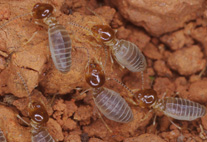Abstract
The extinct Lithornithidae include several genera and species of flying palaeognathous birds of controversial affinities known from the Early Paleogene of North America and Europe. An almost complete, articulated skeleton from the Early Eocene marine deposits of the Fur Formation (Denmark) was recently assigned to Lithornis vulturinus Owen, 1840. This study provides a detailed redescription and comparison of this three-dimensionally preserved specimen (MGUH 26770), which is one of the best preserved representatives of the Lithornithidae yet known. We suggest that some new features might be diagnostic of Lithornis vulturinus, including a pterygoid fossa shallower than in other species of Lithornis and the presence of a small caudal process on the os palatinum. We propose that Lithornis nasi (Harrison, 1984) is a junior synonym of Lithornis vulturinus and we interpret minor differences in size and shape among the specimens as intraspecific variation. To date, Lithornis vulturinus is known with certainty from the latest Paleocene—earliest Eocene to Early Eocene of the North Sea Basin (Ølst, Fur and London Clay Formations). Among the four species of the genus Lithornis, the possibility that Lithornis plebius Houde, 1988 (Early Eocene of Wyoming) is conspecific with either Lithornis vulturinus or Lithornis promiscuus Houde, 1988 (Early Eocene of Wyoming) is discussed. The presence of closely related species of Lithornis on either side of the North Atlantic in the Early Eocene reflects the existence of a high-latitude land connection between Europe and North America at that time.

